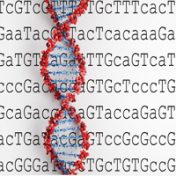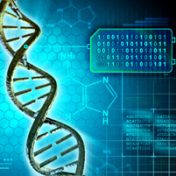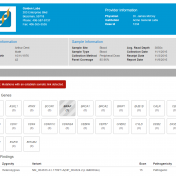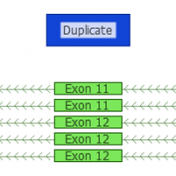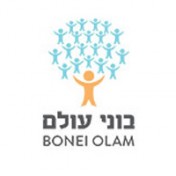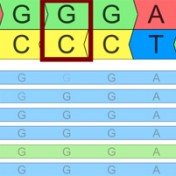The support team at Golden Helix is always here to help with your SVS and VarSeq needs. Often, we receive some excellent questions that should be shared with the rest of our users. This blog will answer some common questions we’ve been seeing lately regarding VarSeq CNV. I’ve noticed there is a version 2 of the CNV caller on Targeted Regions Algorithm, how has… Read more »
Human genetic variation makes us unique. On average, humans are to 99.9% similar to each other. Understanding in detail what the nature of the difference in our genetic make-up is all about allows us to assess health risks, and eventually enables Precision Medicine as we determine treatment choices. Furthermore, it enables scientists to better understand ancient human migrations. It gives… Read more »
Our July webcast presentation will be focused on clinical workflows in VarSeq. We wanted to share the full details with you and hope you are able to attend! Wednesday, July 12th 12:00 PM EST This month’s webcast is a VarSeq exploration, featuring several example workflows and helpful features in VarSeq that can be used in the clinic. We will discuss… Read more »
The current reduced cost and increase availability of genome sequencing has been making academics, clinicians and individuals alike excited with the possibility of increased research depth, diagnosing capability and personal curiosity. And although a freshly sequenced genome is chock-full of tasty letter snippets, the real revelation and education occurs when comparing to an annotation foundation. In this post, I’ll review… Read more »
Today, we are happy to announce a multi-year partnership with Sentieon, a company that develops bioinformatics secondary analysis tools to process genomic data. This partnership will integrate Sentieon’s secondary analysis tools with Golden Helix software to provide users with a comprehensive solution for genomic data analysis. Sentieon’s suite of secondary analysis tools made the significant improvement in runtime over BWA-MEM, GATK,… Read more »
We had lots of customers publish their work using our SVS software, and I wanted to share their work with you. Congrats to all! Here are some of the highlights: Francesca Fernandez of the University of Wollongong along with colleagues published Effects of common GRM5 genetic variants on cognition, hippocampal volume and mGluR5 protein levels in schizophrenia in Brain Imaging and… Read more »
It may be possible to say that annotating a variant correctly and accurately against gene transcripts is the most important job of a variant annotation and interpretation tool. We take it very seriously at Golden Helix as we support VarSeq and its use by our customers in both research and clinical contexts. It has been a source of frustration that… Read more »
This year’s annual Abstract Challenge was once again a successful event. We want to thank all that participated. This year we had nearly 50 submissions and our decision was a difficult one. Here are the selected winners. This year, we had dual first place winners; Reza Sailani and Jingga Inlora of the Michael Snyder lab in the Department of Genetics at… Read more »
With a properly defined wet-lab and bioinformatics process, we are able to zero in on clinically relevant variants. How does a lab report on the outcome of their analysis? We find that most laboratories conduct their variant classification based on the guidelines formulated by the American College of Medical Genetics (ACMG) for inherited diseases. The ACMG guidelines for variant classification… Read more »
Acute lymphoblastic leukemia (ALL) is the most frequently diagnosed cancer in children and one of the leading causes of death due to disease in children. Dr. Daniel Sinnett, along with Pascal St-Onge and their colleagues at Sainte-Justine University Health center have been investigating the molecular determinants of the disease to improve detection, diagnosis and treatment. One particular area of study… Read more »
Clinical labs need to be able to process samples down to a short list of variants and publish a professional report. VSReports helps scientists and clinicians alike create timely, actionable reports that can improve clinical decision making and streamline patient care by seamlessly incorporating the results of tertiary analysis into a customizable clinical report. To include the VSReports functionality in… Read more »
Dr. Laura Li and her colleagues at the Children’s Hospital Los Angeles (CHLA) are working to determine the underlying genetic causes of Optic Nerve Hypoplasia (ONH), which is still unclear. ONH is the absence or under-development of the optic nerve and is currently the leading ocular cause of vision impairments and blindness in young children. ONH can also be combined… Read more »
December’s webcast will provide the Golden Helix community with a more in-depth look at CNV analysis in VarSeq. On December 7th, Dr. Nathan Fortier will discuss the challenges and metrics surrounding CNV detection and then demonstrate VarSeq’s new capability from VCF to clinical report. Wednesday, December 7th @ 12:00 PM, EST Numerous studies have documented the role of Copy Number Variations (CNVs)… Read more »
Copy Number Variants have been important to clinical genetics for quite a while now. So, what has made now the right time to be looking at calling CNVs from NGS data? Well, there are a number of good reasons. The dominant one is simply that the NGS data you are already creating for calling variants can be used in many cases… Read more »
After the Wet Lab process has been completed, the bioinformatics analysis of the sequencing data work begins. The next three blogs will focus on three aspects of this process. The building blocks of a bioinformatics pipeline, documentation and validation (today’s topic) Quality Management Clinical Reporting The Building Blocks of an NGS PipelineThe bioinformatics process to analyze NGS data occurs in three… Read more »
Join us for a guest presentation Personalized Medicine through Tumor Sequencing by Dr. Jeffrey Rosenfeld! Wednesday, September 7th 12:00 pm EDT The identification of medications that target specific gene mutations is one of the major recent advances in cancer therapy. In 2001 Gleevec was approved to treat patients with the BCR-ABL fusion in chronic myelogenous leukemia (CML). Since then many more drugs… Read more »
Every month hundreds of clinicians and researchers access the variety of free resources on the Golden Helix website. Our resource library hosts eBooks, webcasts and tutorials to keep the community apprised of new methods, informed on best practices and to help our customers get the most out of their software purchase. Here is a list of the 5 most watched webcasts… Read more »
Since 1999, Bonei Olam has been providing large-scale funding for fertility treatment and research. The non-profit’s mission is to provide whatever means or resources necessary to help childless couples achieve the dream of parenthood. Today, it is recognized in the worldwide medical arena for its leadership role at the forefront of reproductive medicine, research and technology. Specifically, Bonei Olam has… Read more »
Variant Normalization: Underappreciated Critical Infrastructure It may surprise you to learn that every variant in the human genome has an infinite number of representations! Of course, although true, I’m being a bit hyperbolic to prove a point. Even seemingly simple mutations like single letter substitutions are legitimately represented differently in the local context of other mutations that can be described… Read more »
The Bioinformatics Program at Rutgers Cancer Institute of New Jersey, the state’s only National Cancer Institute-designated Comprehensive Cancer Center, plays an integral part in the center’s precision medicine program helping to bring personalized medicine to patients in a timely manner. The Program needs to determine what mutations from a tumor are relevant to a particular therapeutic option, bringing the right… Read more »



